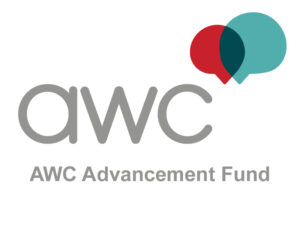We’ve all heard the expression… “The only constant is change”
No words can alter the fact that change is hard on individuals and teams alike. When faced with an unexpected or unwelcomed transition, it’s human nature to immediately descend into fear and doubt. After having three kids, completing my Masters degrees, and continuing to thrive in my work at Illinois State University, I’ve certainly had my fair share of change and personal evolution. When change comes unexpectedly, it’s difficult to navigate – especially among a team in a professional environment. As leaders in the communication discipline, keep these five tips in mind for the workplace when change inevitably strikes.
1. Set the Expectation that Change is Inevitable
“Change before you have to.”
Oftentimes when a change turns negative, it’s because of unspoken expectations. As a leader, frequently communicate your vision of the company as a dynamic and evolving organization, where progress and change are inevitable. If your co-workers hear this message when they’re first hired, and you reinforce the thought frequently through your mission and vision statements, and other company messaging, you can prevent many of your team members from settling into complacency or assuming they work for a static organization.
2. Understand the “How Will It Affect Me?” Principle
Whether your change is positive, every employee will go straight to, “How will this affect me?” Accept the fact that any time there’s a major development at work–positive or not–there will be a natural dip in productivity as individuals and teams react and adapt to a new paradigm, environment, organizational structure or leadership team. Your first message should not be, “Here’s what’s happening, and here’s what you should think about it.” This approach will only create additional resistance. Instead, look at the change through the eyes of each department or person, and give them time to work through their own individual reactions.
3. Never Package a Negative Change as a Positive One
“Change is never easy.”
If you’re making an announcement, and you know your employees will view it negatively, the worst thing you can do is try to convince them that it’s actually a great thing for them. They will be able to see right through it, and they will view you as insincere and condescending. Just state the facts–including whatever relevant circumstances (not excuses) may have led to this point–sincerely acknowledge that it’s not ideal, and be available to answer questions.
4. Embrace the Change Cycle
When it comes to change management, there’s no one-size-fits-all solution, and there’s no predictable timeline for when everyone will be enthusiastically on board. Each person will proceed at his or her own pace through “the change cycle,” which starts with feelings of loss, then doubt, then discomfort, followed by discovery, understanding, and finally integration.
“There is nothing wrong with change, if it is in the right direction.”
After you announce a change, expect for some to move through the cycle in a few hours and others to take a month. Rely on what you know about each individual member of your team, and after a while, reach out personally to those who seem to be stuck in doubt or discomfort. Allow them to voice their concerns, ask their questions, or even make their accusations. Seek first to understand, then to be understood as you try to help them make forward progress through the change cycle.
5. Watch Out for the Underminers
Your chances of getting 100% of your employees completely on board with big changes can be slim. Once you’ve made the announcement, give people ample time to work through their reactions, and offer personal assistance to the stragglers, if you’re still noticing hotbeds of resistance or negativity, then it’s time for a different kind of conversation. As a leader, your best approach is to create a culture that embraces change. Respect everyone’s right to have their own reactions, communicate the news with authenticity and empathy, and give everyone time to work through the change cycle at an individual pace.
About the Author

Julie is an Academic Advisor & Lecturer in the School of Communication at Illinois State University. Julie’s job duties focus on assisting Public Relations and Journalism students plan their coursework, instructing a public speaking course and pre-professional course for Mass Media students, and coordinating a summer study abroad experience in Paris, France. Julie was previously employed in marketing at YWCA McLean County where she developed her skillset in social media, public relations and special events. She holds a B.S. and a M.S. from the School of Communication and a M.S. from the Department of English at Illinois State University. Julie is a past-president of the Bloomington-Normal AWC chapter and current serves as a board member at-large with AWC National.

